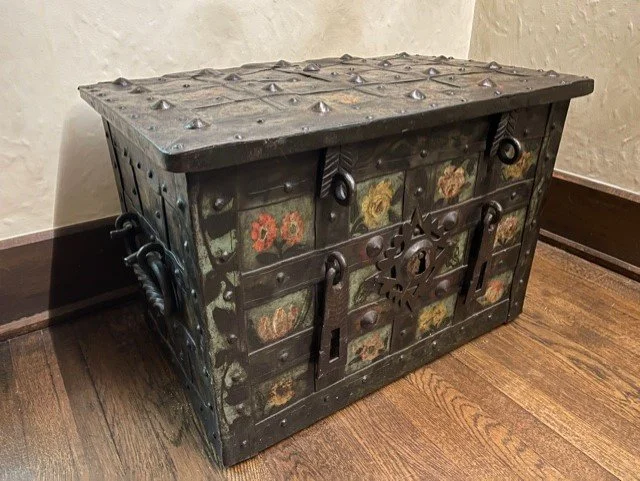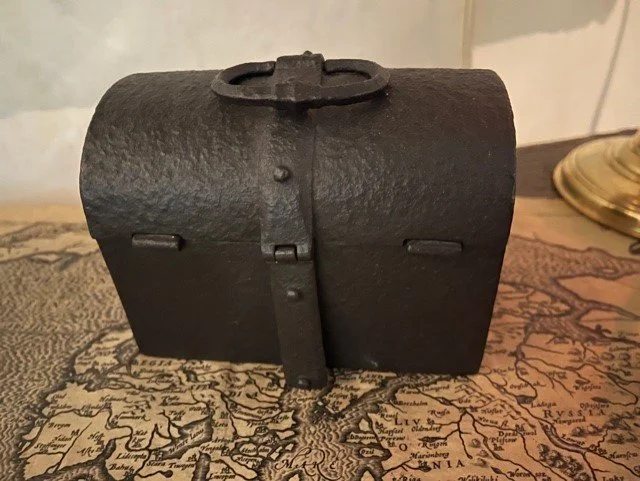Strongboxes in the Agecroft Collection
Earlier this summer, digital money was in the news with dogecoin, a form of cryptocurrency, stock doing extremely well in the market. Digital currency proves how money today no longer requires physical tokens. It can be just a number on a banking app or website. Some people, myself included, rarely use cash. Some people use credit, which is simply a promise to pay in the future. No actual money changes hands. . However, in Agecroft’s earliest days, money was all coinage. Made of precious metals, money was not standardized throughout the country and banking, as we know it, did not exist—it only really appeared in England in the 16th century after Henry VIII dissolved the monasteries. So where did people like the Langley or Dauntesey families, keep their money, important documents and other valuables? In a strong box which is an extremely heavy, locked metal box. In our collection at Agecroft, we have three strongboxes. These were common in most homes and were probably kept in in a closet. Businesses also used strongboxes to protect the day’s profits and any valuable merchandise.
Our largest strongbox is about eighteen inches tall and thirty inches wide. Made of black iron, it is decorated with crisscrossing metal straps which frame squares featuring colorful, painted flowers. The most exciting part of this box is its locking mechanism. When looking at the box, it appears the lock is on the front of the box. This decoy is a safeguard measure while the real lock is actually recessed under a metal plate on the top of the box. If an unsuspecting thief were to attempt to open the box using the fake locks, large steel spikes would shoot out towards him. While this protective measure might seem flimsy to us, the box’s weight and booby-trapped locks were the height of security in the 17th century.
The next strongbox is smaller, more ‘personal’ sized, but still rather heavy. It is decorated with various engravings—a bearded man, a hunter and his dogs chasing a bird, a scene of Creation with Adam and God. This piece was probably made in Germany, as was the large strongbox, in the mid-1650s. The third, and smallest strong box is a mere four inches tall and probably only held coins. This box is also called a money box and is very similar to metal caskets made in France during the 16th and 17th century. This box is simply designed—it bears a striking resemblance to a travel case with a strap design and a handle attached to its domed top.
Money in the 16th and 17th century was a critical, tangible asset, and people wanted to protect it at all costs. While we now have many safeguards in place to protect our money in banks, people have not always had this privilege. Strongboxes were an answer to keeping and protecting your money.






